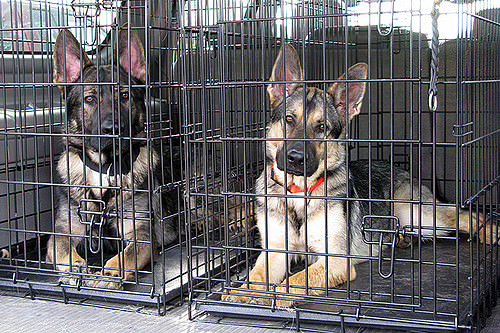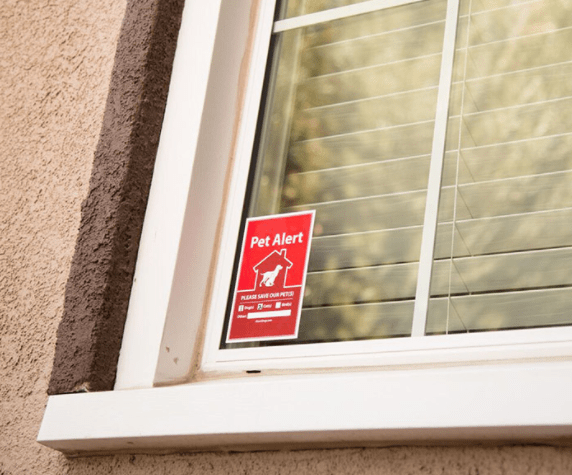When it comes to emergency preparedness, there is a lot to take into consideration. There is even more planning involved, however, when there are pets to care for. Making sure our dogs are able to stay safe during a disaster is important, and there are a few extra steps to take when it comes to ensuring everyone’s safety. If you’re looking for a place to start planning, make sure you check these things off your list.
#1 – Have Proper Identification
A collar with an identification tag and a microchip are two things that your dog should have. Collars with ID tags are an easy way to immediately show that your dog isn’t stray. They provide your information instantly to anyone who can read the tag. Unfortunately, tags can fade and collars can fall off. A microchip is a permanent method of identification that will provide your information to those with a scanner – typically any veterinarian or animal shelter. It’s impossible to tell if a dog has a microchip without scanning it, but once scanned, the good Samaritans will be able to contact you and return your dog safely.

#2 – Have Knowledge Of Pet-Friendly Shelters On Hand
Everyone should have an idea of several places they can stay during an emergency evacuation – be it at a family member’s house or hotel. It’s important to make sure that wherever you go, your pets can come with you. While we’d like to think that hotels and other places will allow pets during an emergency, it’s best not to assume and to make sure you and your dog have a safe place to go. It’s suggested to find several pet-friendly locations to stay and also a few boarding facilities, should the shelters fill up and you find yourself being forced to stay somewhere where pets aren’t allowed.

#3 – Prepare An Emergency Kit For Each Pet
Just like you prepare a kit for every person in your home, you’ll want to prepare a kit for each pet. Food, water, medications, treats, extra leashes, poop bags, collars, blankets, crates and/or carriers, veterinarian information, extra identification tags, and more are all important things to remember when packing an emergency preparedness kit for your dog. For more ideas on what should go inside your kit, consider the ASPCA’s suggestions.
#4 – Locate Closest Emergency Veterinary Facilities
Every dog owner should have the closest emergency veterinary hospital’s information stored at home, but an emergency might mean that pets are filling up the hospitals quickly. While we hope no disaster harms any pets, it’s best to have more than one emergency facility on file. You never know where you’re going to end up or how full the animal hospitals are going to be, so being prepared to visit any one of them is best.
#5 – Consider A Rescue Alert Sticker
Rescue stickers, like the ones we have here, are recommended by the ASPCA to allow neighbors and rescue workers to see what animals might be in a home. Perhaps disaster strikes while you are at work or running errands and you’re unable to get home to evacuate your pets.
Letting rescue workers know what types of pets and how many are in your home will greatly increase the chance that they are safely evacuated and reunited with you, and having their collars and ID tags will help the workers contact you. Further, you can carry around your own wallet cards should something happen to you while you’re away and you’re unable to come home. We hope this doesn’t happen, of course, but letting emergency workers know that you have pets at home alone will allow them to send for help.
For more information on flood safety and preparedness for you and your pet, click here.

